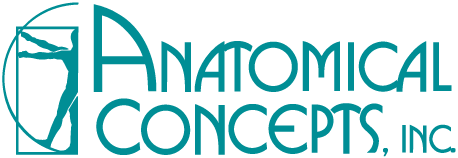.jpg?width=1200&height=628&name=ACI-Oct-Blog-Featured-Image%20(1).jpg)
Your focus as a physician trained in orthopedics and musculoskeletal care is to provide your patients with effective solutions to alleviate pain, enhance mobility, and improve their overall quality of life. Among the essential tools, orthotic devices are potent allies in achieving these objectives.
In this blog, we will delve into the significant role of orthotic devices, specifically in enhancing joint stability, and why they are indispensable in your practice.
Understanding Joint Stability
Joint stability is a fundamental concept in musculoskeletal care. It refers to the ability of a joint to maintain its proper alignment and function, ensuring that it can withstand forces and movements without excessive motion or misalignment. Joint instability can lead to pain, discomfort, reduced functionality, and a heightened risk of injuries.
An orthopedic doctor often encounters patients with various conditions that challenge joint stability. These conditions may include ligament injuries, post-surgical recovery, musculoskeletal deformities, osteoarthritis, and neurological disorders. In such cases, orthotic devices emerge as valuable treatment options to restore and enhance joint stability without surgery.
The Role of Orthotic Devices
Orthotic devices, or orthoses, are the unsung heroes of treatment. They are precision-crafted custom or prefabricated medical marvels designed to bolster joint stability and overall musculoskeletal health. These devices do more than just manage symptoms; they improve patient outcomes and long-term well-being.
Let's review how orthoses bolster joint stability:
Stabilization: Orthoses provide much-needed stability to joints, especially those recovering from injuries or surgical procedures. For example, we commonly recommend knee-ankle-foot orthoses (KAFOs) and ankle-foot orthoses (AFOs) for patients.
These devices are instrumental in stabilizing and shielding joints recuperating from ligament injuries or surgery. By curbing excess movement, orthoses offer a cocoon of support for the healing process, mitigating the risk of further harm.
Alignment Correction: Orthotic devices are designed to address alignment discrepancies. They work tirelessly to maintain joints optimal for healing and function.
Custom orthoses, in particular, are tailored to the patient's unique anatomy and condition. Their precision is unmatched when it comes to correcting alignment issues.
Load Distribution: In cases of musculoskeletal conditions like osteoarthritis, pressure distribution within joints can become uneven, resulting in pain and degeneration. Orthotic devices step in to recalibrate this equilibrium. By redistributing forces, they alleviate pain and slow joint degeneration. The result? Improved joint stability and enhanced overall comfort.
Support During Rehabilitation: Orthoses play a pivotal role in post-surgery rehabilitation. They enable patients to embark on controlled, safe movements and exercises, fostering strength and mobility without jeopardizing healing. This controlled rehabilitation is the foundation of a patient's long-term recovery and joint stability.
Neuromuscular Conditions: For patients dealing with neurological conditions, the challenges to joint stability are many. Here, orthoses act as guardians, providing external support and control. They enhance mobility, mitigate the risk of falls, and reduce the likelihood of injuries.
Custom vs. Prefabricated Orthoses
The choice between custom-made and prefabricated orthotic devices is not a one-size-fits-all decision. It hinges on the patient's unique condition and requirements.
Custom Orthoses: These devices are individually crafted based on precise measurements and patient anatomy assessments. They are the pinnacle of personalization, ideal for complex cases or unique anatomical challenges. Custom orthoses offer an unparalleled fit and level of support, fortifying joint stability with surgical precision.
Prefabricated Orthoses: Prefabricated orthotic devices come in standardized sizes and designs. They may lack the finesse of custom counterparts but are readily available and effective for many patients. They are valuable in less complex cases or when immediate solutions are imperative.
The Physician's Role
As physicians entrenched in musculoskeletal care, your responsibility extends beyond diagnosing and prescribing. You must comprehensively assess each patient's unique condition and recommend the most fitting orthotic solution.
This assessment requires a discerning evaluation of the patient's medical history, a meticulous physical examination, and judicious diagnostic tests. Effective communication with orthotists or orthopedic specialists is paramount to ensure the orthotic device is tailored to the patient's needs.
Orthotic devices are helpful in the quest for joint stability — an indispensable cornerstone of effective musculoskeletal care. They are not mere palliative measures but active agents of healing and restoration.
We often work with doctors in evaluating orthotic solutions that align with patients' unique conditions. Incorporating orthotic devices into your practice significantly improves the ability to address joint stability challenges effectively.
To learn more about our orthotic solutions, review our Orthotic Product Directory.
 330-757-3569
330-757-3569




